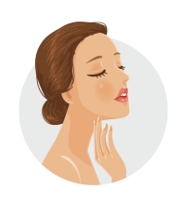Niacinamide: A Complete Dermatologist Guide
April 21, 2025 2025-04-22 10:14Niacinamide: A Complete Dermatologist Guide
As an Amazon associate, Dermatocare earns from valid purchase made by clicking on the affiliate links in this blog.

Niacinamide: A Complete Dermatologist Guide
Introduction
Niacinamide, also known as Vitamin B3, has emerged as one of the most versatile and well-tolerated skincare ingredients in dermatology. It plays a vital role in strengthening the skin barrier, reducing inflammation, and improving overall skin health. This guide offers a comprehensive overview of its benefits, optimal usage, and precautions tailored to different skin types, including sensitive skin.
What Is Niacinamide?
Niacinamide is the amide form of niacin (vitamin B3), a water-soluble vitamin essential for cellular energy production and skin barrier repair. It is used topically in various formulations including serums, moisturizers, sunscreens, and prescription products. Unlike active ingredients like retinoids or acids, niacinamide is remarkably gentle, making it suitable for most skin types.
What Are the Benefits of Niacinamide?
Niacinamide offers a wide array of dermatological benefits, backed by clinical evidence:
1. Improves Skin Barrier Function
- Enhances ceramide and free fatty acid synthesis.
- Reduces transepidermal water loss (TEWL), improving hydration.
2. Reduces Inflammation
- Helps in managing acne, rosacea, and eczema by suppressing inflammatory mediators.
3. Minimizes Redness and Blotchiness
- Particularly beneficial in patients with rosacea and sensitive skin.
4. Brightens Skin Tone
- Inhibits melanosome transfer, helping fade hyperpigmentation, melasma, and post-inflammatory marks.
5. Controls Sebum Production
- Balances oiliness, making it ideal for acne-prone and oily skin.
6. Reduces Fine Lines and Wrinkles
- Promotes collagen synthesis and skin elasticity.
7. Antioxidant Properties
- Protects against free radical damage and photoaging.
Which Niacinamide Formulation is Best?
For Sensitive Skin:
Look for lower concentrations (2–5%) in fragrance-free and alcohol-free formulations.
- Recommended products:
- CeraVe PM Moisturizing Lotion (4% niacinamide)
- La Roche-Posay Toleriane Double Repair Moisturizer
- Paula’s Choice Calm Repairing Serum (suitable for redness-prone skin)
For Normal to Oily/Acne-Prone Skin:
Higher concentrations (5–10%) can be used for oil control, acne, and pigmentation.
- Recommended products:
- The Ordinary Niacinamide 10% + Zinc 1%
- Paula’s Choice 10% Niacinamide Booster
- Inkey List Niacinamide
How to Use Niacinamide in Your Routine
- Apply after cleansing and before moisturizer and sunscreen.
- Can be used AM/PM
- May be layered withmost ingredients like peptides or ceramides, antioxidants (like vitamin C) and hyaluronic acid, retinol, salicylic acid, AHA/BHA etc
- Can be used twice daily for best results.
Side Effects of Niacinamide
Though niacinamide is considered non-irritating and safe for most skin types, the following side effects may rarely occur:
- Mild stinging or burning, especially with higher concentrations (>10%)
- Redness or itching in sensitive individuals
- Purging in acne-prone skin when starting new formulations
Who Should Avoid Niacinamide?
- Patients with severe rosacea flare-ups: Start with 2% or lower concentrations only.
- Allergy to vitamin B3 derivatives (very rare): Discontinue if rash or swelling occurs.
- Users already using multiple active ingredients: Introduce niacinamide slowly to avoid ingredient overload.
Conclusion
Niacinamide is a multitasking powerhouse suited for a broad spectrum of dermatologic concerns — from acne to aging to sensitivity. Its compatibility with other ingredients, combined with its barrier-strengthening and anti-inflammatory properties, makes it a staple in modern skincare routines. Whether you’re managing oily skin, combating pigmentation, or soothing irritation, there’s a niacinamide formulation to support your goals.
ROUTINE FINDER
Get free dermatologist-recommended regime by choosing your skin or concerns.

FACE

HAIRS

CHILD

BODY




